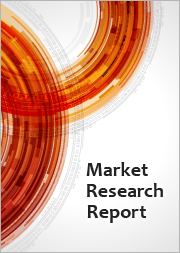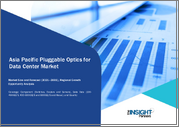
|
시장보고서
상품코드
1864315
방송용 렌즈 시장 : 용도별, 기술별, 제품 유형별 - 세계 예측(2025-2032년)Broadcast Lens Market by Application, Technology, Product Type - Global Forecast 2025-2032 |
||||||
방송용 렌즈 시장은 2032년까지 CAGR 4.52%로 39억 9,000만 달러 규모로 성장할 것으로 예측됩니다.
| 주요 시장 통계 | |
|---|---|
| 기준 연도 2024년 | 28억 달러 |
| 추정 연도 2025년 | 29억 2,000만 달러 |
| 예측 연도 2032 | 39억 9,000만 달러 |
| CAGR(%) | 4.52% |
방송용 렌즈 생태계에 대한 권위 있는 견해로 핵심 기술 촉진요인, 이해관계자의 우선순위, 채택 및 통합을 형성하는 전략적 선택에 대해 설명합니다.
방송용 렌즈 생태계는 센싱 기술, 연결성, 엣지 인텔리전스의 발전에 힘입어 기능적, 상업적 측면에서 급속한 성숙 단계에 접어들었습니다. 기술의 융합으로 렌즈의 역할은 순수 광학 부품에서 프로세서, 센서, 소프트웨어 스택을 통합하는 시스템 레벨의 기반 기술로 전환되고 있습니다. 이러한 변화는 새로운 가치사슬과 이해관계자들의 기대를 낳고 있으며, 특히 일관성, 상호운용성, 라이프사이클 지원에 대한 통합업체와 플랫폼 제공업체들의 요구가 높아지고 있습니다.
도입 시나리오가 확대되면서 이해관계자들은 서로 상충되는 우선순위를 조정해야 하는 상황에 직면해 있습니다. 장치 제조업체는 비용과 통합의 편의성을 중시하고, 솔루션 제공업체는 데이터 정확성과 분석 대응력을 강조하며, 최종사용자는 프라이버시, 신뢰성 및 모든 상황에서 원활한 성능을 요구합니다. 이러한 긴장이 조달 기준, 컴플라이언스 전략, 로드맵 결정에 영향을 미치고 있습니다. 따라서 리더는 반복적인 시스템 검증, 부서 간 엔지니어링, 공급업체와의 긴밀한 협력이 경쟁 우위를 결정짓는 시기를 예견해야 합니다. 이러한 상황에서 파트너 선정, 모듈식 아키텍처, 테스트 체계에 대한 전략적 명확성이 기술 및 규제 리스크를 관리하면서 도입을 가속화하는 데 결정적인 역할을 합니다.
연결성, AI 공동 설계, 규제 변화, 공급망 재편 등 엔지니어링, 조달, 상용화를 재정의하는 혁신의 힘
네 가지의 병행하는 트렌드가 정세를 재구성하고 새로운 설계 및 상업화 방식을 도입하고 있습니다. 첫째, 광범위한 연결성과 저지연 네트워크의 부상으로 실시간 분석 및 분산 처리 아키텍처가 가능해지면서 렌즈 성능과 통합에 새로운 제약이 생기고 있습니다. 둘째, AI 기반 이미징 애플리케이션은 광학 시스템에 더 높은 데이터 품질과 결정론적 거동을 요구하고 있으며, 광학 및 머신러닝 파이프라인의 공동 설계가 점점 더 중요해지고 있습니다. 셋째, 규제 및 프라이버시 프레임워크는 데이터 처리 및 기기 투명성에 대한 더 엄격한 요구 사항을 부과하고 있으며, 제조업체는 프라이버시 보호 기능과 더 강력한 감사 가능성을 설계에 포함시켜야 합니다. 마지막으로, 공급망 다변화와 니어쇼어링의 추세로 인해 기업들은 조달 전략과 재고 버퍼를 재검토하고 있습니다.
이러한 변화가 맞물려 양극화된 기회 영역이 형성되고 있습니다. 한편으로는 자율주행 및 고급 진단과 같은 미션 크리티컬한 애플리케이션을 지원하는 고부가가치, 긴밀하게 통합된 솔루션입니다. 반면, 모듈식이며 비용 효율성이 높은 제품으로, 민수용 전자기기 및 대량 도입에 최적화된 제품입니다. 이러한 모드 간 전환을 위해서는 유연한 제조 접근 방식, 적응형 소프트웨어 아키텍처, 그리고 교차 도메인 테스트에 대한 새로운 초점이 필요합니다. 성공적인 조직은 광학 설계와 알고리즘 목표를 일치시키기 위해 다분야 팀을 구성하고, 제품 라이프사이클의 초기 단계에서 규제 대응을 보장하며, 공급망 가시성을 유지하여 혼란을 줄이는 조직일 것입니다.
2025년 도입된 관세 조치가 공급처 선정, 공급업체 전략, 지역 혁신 네트워크, 가치사슬 전반의 비즈니스 연속성(운영 탄력성)에 미치는 영향을 종합적으로 평가합니다.
2025년에 도입된 일련의 관세 조치는 조달 결정, 계약 구조, 재고 관리 관행에 영향을 미쳐 밸류체인의 여러 노드에 명백한 압력을 가하고 있습니다. 렌즈 시스템에 필수적인 프로세서, 센서 등 부품의 경우 관세 인상으로 인해 수입 모듈의 총 착륙 비용이 상승하고, 제조업체는 공급업체 다변화, 가능한 한 현지 조립 추구, 우대 조건 확보를 위한 장기 공급 계약 재협상을 촉구하고 있습니다. 이로 인해 갑작스러운 비용 충격으로부터 보호하기 위해 공급업체 중복화 및 긴밀한 공급업체 통합을 위한 움직임이 가속화되고 있습니다.
직접적인 비용 영향을 넘어, 관세는 연구 제휴 및 국경 간 협력에 대한 전략적 판단에도 변화를 가져오고 있습니다. 조직들은 지정학적 리스크와 정책 주도형 무역장벽의 가능성을 고려하여 공동개발 활동을 평가하는 경향이 강화되고 있습니다. 이를 통해 핵심 지적재산권과 고부가가치 프로세스를 관할권 내에 유지하면서 보다 지역화된 혁신 네트워크와 선택적 기술 이전을 촉진하고 있습니다. 이와 함께 다운스트림 고객들은 원산지 및 규정 준수에 대한 투명성 향상을 요구하고 있으며, 제조업체는 추적성 및 인증 관행을 강화해야 합니다. 이에 따라 기업들은 디지털 공급망 도구와 계약 구조에 대한 투자를 통해 관세 변동에도 불구하고 조달 흐름을 안정화하고 서비스 연속성을 유지하기 위해 노력하고 있습니다.
운영 측면에서 기업은 현실적인 조치로 적응하고 있습니다. 구체적으로는 관세 리스크를 줄이기 위한 물류 경로 재구축, 경제성이 허용하는 범위 내에서 현지 조달 비율 향상, 대체 부품의 인증 프로세스 가속화 등입니다. 이러한 전술적 대응과 더불어 회복탄력성과 예측가능성을 우선시하는 전략적 전환이 진행되고 있습니다. 조달의 민첩성, 더 깊은 공급업체 파트너십, 탄탄한 컴플라이언스 기반을 효과적으로 결합하는 기업은 정책으로 인한 혼란을 흡수하는 동시에 역량 개발과 고객에 대한 약속을 유지하는 데 있어 우위를 점할 수 있을 것입니다.
상세한 세분화 분석을 통해 용도, 기술, 제품 유형의 차이를 파악하여 개발 우선순위, 컴플라이언스 계획, 상업적 포지셔닝을 수립합니다.
세분화된 세분화 분석을 통해 제품 개발 및 시장 출시 전략을 형성하는 명확한 채택 벡터와 기술 종속성을 파악할 수 있습니다. 용도별로 보면 자동차, 가전제품, 의료 분야로 확산되는 양상을 보이고 있으며, 자동차는 자율주행차와 전기자동차, 가전제품은 스마트폰과 웨어러블 기기, 의료 분야는 진단기기와 모니터링 기기로 세분화됩니다. 자율주행차는 확정적인 지연 시간과 견고성을 요구하고, 전기자동차는 차량 제어 시스템과의 통합과 전력 제약이 우선시되는 등 각 하위 부문마다 고유한 성능, 안전 및 검증 요구사항이 존재합니다. 스마트폰과 웨어러블은 소형화, 전력 효율성, 비용 목표를 중시하고, 진단 및 모니터링 기기는 임상 수준의 정확성과 엄격한 규제 준수를 필요로 합니다.
기술적 관점에서 볼 때, 주요 레이어는 5G, AI, IoT로 구성되며, AI 자체는 컴퓨터 비전과 머신러닝으로, IoT는 민수용 IoT와 산업용 IoT로 구분됩니다. 이러한 기술의 융합은 서로 다른 엔지니어링 우선순위를 만들어 냅니다. 5G는 엣지 프로세싱 패러다임을 가능하게 하는 초 고신뢰성, 저지연 링크를 도입합니다. 컴퓨터 비전은 광학 보정 및 이미지 충실도에 대한 엄격한 요구 사항을 부과하며, 이는 훈련 데이터와 모델의 견고성에 영향을 미칩니다. 머신러닝은 예측 가능한 데이터 파이프라인과 라벨이 부착된 데이터세트가 필요합니다. 소비자 IoT는 비용과 사용자 경험을 중시하는 반면, 산업용 IoT는 내구성과 장기적인 유지보수를 중시합니다.
제품 유형별로는 하드웨어(프로세서 및 센서), 서비스(컨설팅 및 유지보수), 소프트웨어(분석 소프트웨어 및 플랫폼 소프트웨어) 영역이 포함됩니다. 하드웨어 선택은 시스템의 기본 성능과 통합 오버헤드를 결정합니다. 서비스는 컨설팅 중심의 통합과 지속적인 유지보수 계약을 통해 도입 마찰을 줄이고 가동 시간을 보장하는 데 있어 중요한 역할을 합니다. 소프트웨어는 데이터 해석, 분석, 플랫폼의 확장성을 결정합니다. 제품 로드맵에서 하드웨어 역량과 분석 성숙도, 서비스 제공을 일치시킴으로써 부문 간 시너지를 창출하고, 각 애플리케이션 서브부문의 정밀한 성능 및 컴플라이언스 요구사항을 충족하는 차별화된 제안을 할 수 있습니다.
채택 궤적, 규제, 제조, 생태계 차이에 대한 전략적 지역적 관점(아메리카, 유럽/중동 및 아프리카, 아시아태평양)
지역별 역동성이 규제 환경, 산업 기반, 혁신 생태계에 의해 형성되는 차별화된 도입 일정과 전략적 우선순위를 추진하고 있습니다. 아메리카에서는 기존 클라우드 및 반도체 생태계와의 대규모 도입 및 통합에 중점을 두고 있으며, 커넥티드 소비자 기기 및 운송 솔루션에 대한 수요가 집중되고 있습니다. 주요 시장의 규제 프레임워크와 인센티브는 국내 생산 파트너십과 엣지 컴퓨팅 인프라에 대한 투자를 촉진하고, 엔터프라이즈급 애플리케이션의 상용화 과정을 가속화하고 있습니다.
유럽, 중동 및 아프리카에서는 엄격한 규제와 프라이버시 표준이 영향을 미치고 있으며, 제조업체와 통합업체는 투명성, 데이터 보호 기능, 인증 지원 설계를 우선시하고 있습니다. 지역적 다양성에 대응하기 위해 범지역적 플랫폼 전략과 지역별 컴플라이언스 채널 제휴를 병행하는 섬세한 시장 진입 접근이 요구됩니다. 지속가능성과 순환 경제에 대한 투자도 더욱 두드러져 재료 선택과 라이프사이클 관리의 우선순위를 형성하고 있습니다.
아시아태평양은 제조 규모, 부품 공급, 빠른 소비자 채택 주기의 거점입니다. 강력한 현지 공급망 역량과 집중된 전자제품 생태계는 특히 소비자 전자제품 및 IoT 사용 사례에서 신속한 반복 개발과 비용 최적화를 가능하게 합니다. 동시에, 이 지역의 시장 리더들은 AI 기능을 기기에 적극적으로 통합하여 성능과 경제성에 대한 경쟁적 압력을 창출하고 있습니다. 모든 지역에서 성공적인 지역 전략은 세계 플랫폼의 일관성과 규제, 상업, 인프라의 차이를 반영하는 지역별 실행 모델의 균형이 요구됩니다.
통합 중심의 제품 전략, 소프트웨어 서비스 확대, 파트너십, 인수를 통한 역량 가속화를 강조하는 경쟁 정보
방송용 렌즈 분야의 기업 전략은 몇 가지 핵심 테마로 집약되고 있습니다. 시스템 통합 심화, 소프트웨어 및 서비스 포트폴리오 확대, 전문 부품 및 유통 채널에 대한 접근을 위한 전략적 파트너십 구축입니다. 주요 기업들은 하드웨어 성능이 첨단 분석 기술과 일치하도록 광학 공동 설계 능력에 대한 투자를 진행하고 있습니다. 한편, 서비스 지향적인 기업들은 컨설팅과 유지보수 서비스를 패키지로 묶어 기업 도입을 용이하게 하고 있습니다. 통합 시간을 단축하고 구매자의 리스크를 줄이는 엔드투엔드 솔루션을 제공하기 위해 부품 공급업체, 분석 제공업체, 채널 파트너 간의 협력이 점점 더 보편화되고 있습니다.
경쟁사와의 차별화는 독자적인 교정 기술, 모델 훈련용 데이터세트, 고부가가치 고객 맞춤형 맞춤화 시간을 단축하는 검증된 통합 스택에서 비롯됩니다. 또한, 엄격한 컴플라이언스 체계와 핵심 부품의 투명한 출처를 증명할 수 있는 기업은 의료, 자동차 등 규제 산업에서 우위를 점하고 있습니다. 상업적 측면에서는 하드웨어 판매와 플랫폼 액세스 관리 서비스를 결합한 하이브리드 라이선스 및 구독 모델을 실험하여 지속적인 수익원과 고객 관계를 강화하기 위해 노력하고 있습니다. 전략적 M&A 활동은 일반적으로 전문 이미지 처리 알고리즘이나 내결함성 센서 제조와 같은 틈새 역량을 대상으로 하며, 자체 개발 리드타임을 단축하고 로드맵 실행을 가속화합니다. 전반적으로 측정 가능한 고객 성과와 검증된 시스템 성능을 중심으로 제품 엔지니어링, 소프트웨어 개발, 상업적 모델을 통합하는 조직이 경쟁 우위를 확보할 것입니다.
리더들이 광학에서 AI까지 공동 설계 역량을 구축하고, 공급업체의 회복탄력성을 강화하며, 컴플라이언스를 효율화하고, 지속가능한 우위를 위해 상업적 모델을 발전시킬 수 있는 실행 가능한 전략적 조치들
업계 리더들은 운영 및 정책 리스크에 대한 노출을 줄이면서 단기적인 기회를 포착하기 위해 실용적이고 실행 가능한 일련의 조치들을 우선시해야 합니다. 첫째, 시스템 수준의 성능을 보장하고 고가의 개조 필요성을 줄이기 위해 광학에서 AI로의 공동 설계 능력에 대한 투자가 필요합니다. 이를 위해서는 개발 라이프사이클의 초기 단계에서 광학 엔지니어, 펌웨어 팀, 데이터 과학자들이 협력하여 모델 요구사항이 센서 선택 및 보정 전략을 주도하도록 조정해야 합니다. 다음으로, 중요한 프로세서와 센서에 대해 여러 공급처를 인증하고, 정책 전환 시 투명성과 연속성을 높이기 위한 계약 조항을 포함시켜 공급업체 네트워크를 강화합니다. 이러한 공급업체의 회복탄력성은 관세나 물류 혼란이 발생했을 때에도 생산 속도를 유지하는 데 필수적입니다.
셋째, 규제 대상 분야로의 진입을 가속화하기 위해 인증 및 컴플라이언스 대응 가이드를 정식으로 수립합니다. 여기에는 전용 검증 연구소 설립과 규제 당국과의 조기 협력도 포함됩니다. 넷째, 측정 가능한 성과를 제공하고 장기적인 고객 참여를 창출하는 하드웨어-소프트웨어-서비스 통합 제공 형태로 상업적 모델을 전환합니다. 다섯째, 조달 이력 보고 및 부품 수준의 감사 가능성을 지원하는 디지털 공급망 도구와 추적성 프레임워크를 도입합니다. 마지막으로, 지역 진출을 위한 전략적 파트너십을 구축하는 것입니다. 현지 인티그레이터, 시스템 하우스, 제조 파트너와 협력하여 세계 R&D 강점과 지역 기반의 제조 및 유통의 균형을 맞추고 있습니다. 이러한 조치들을 종합적으로 실행함으로써 조직은 책임감 있는 규모 확장을 실현하고, 수익률을 지키며, 고객에게 차별화된 가치를 제공할 수 있습니다.
1차 인터뷰, 기술적 검증, 2차 자료의 삼각 검증, 반복적인 전문가 검증을 결합한 다방법론적 조사 방법의 투명한 설명
본 조사의 통합은 1차 정성적 인터뷰, 기술적 검증, 2차 자료의 삼각측정을 통합한 다방법론적 증거 프레임워크를 기반으로 하고 있습니다. 1차 조사에서는 제품 엔지니어링 책임자, 조달 책임자, 시스템 통합업체와 구조화된 토론을 통해 통합, 인증, 실제 운영 성능에 대한 현실적인 제약을 파악했습니다. 기술 검증에서는 광학 사양, 센서 성능 지표, 알고리즘 요구사항을 종합적으로 검토하여 결론이 이론적 가정이 아닌 엔지니어링 현실을 반영할 수 있도록 했습니다.
2차 정보를 통한 삼각측량은 공개된 규제 당국 제출 서류, 특허 활동, 업계 표준 문서를 활용하여 동향을 맥락화하고 실무자의 증언을 뒷받침하는 방식으로 진행되었습니다. 데이터의 무결성은 반복적인 검증 주기를 통해 유지되며, 예비 결과는 도메인 전문가들의 재검증을 거쳐 반증과 새로운 정책 변경에 따라 정교화됩니다. 분석 방법으로는 교차 세분화 비교, 정책 및 공급망 우발적 사건을 탐색하는 시나리오 분석, 전략적 레버리지를 파악하기 위한 역량 매핑 등이 있습니다. 이러한 접근 방식을 결합하면 증거의 한계와 가정에 대한 투명성을 유지하면서 인사이트 창출을 위한 견고한 토대를 마련할 수 있습니다.
전략적 우선순위와 위험의 간결한 통합을 통해 공동 설계, 공급업체 탄력성, 컴플라이언스, 성과 지향적 상업화의 필요성을 강조하고 있습니다.
요약하면, 방송 렌즈 분야는 광학 공학, 임베디드 컴퓨팅, 응용 분석의 교차점에 위치하고 있으며, 그 발전 궤도는 업계 관계자들이 통합의 복잡성, 정책 주도의 혼란, 지역 고유의 수요를 어떻게 효과적으로 관리하느냐에 따라 형성될 것입니다. 단기적인 성공은 광학 및 알고리즘의 공동 개발, 관세 변동에 대한 공급업체 네트워크 강화, 개별 부품을 넘어 측정 가능한 시스템 결과를 제공하는 패키징을 실현할 수 있는 능력에 따라 결정됩니다. 중장기적인 차별화는 검증된 캘리브레이션 기술, 검증된 데이터세트, 그리고 구매자의 리스크를 줄이고 도입을 가속화하는 서비스 모델을 통해 이루어집니다.
따라서 이해관계자들은 자원을 부문 간 역량 강화, 선택적 지역 파트너십, 컴플라이언스 및 추적성 기반에 대한 투자에 집중해야 합니다. 이를 통해 조직은 새로운 과제를 경쟁 우위로 전환하고, 센싱 및 이미징 기술의 혁신이 신뢰할 수 있고 확장 가능하며 상업적으로 실현 가능한 솔루션으로 이어질 수 있도록 보장할 수 있습니다. 앞으로의 길은 엄격한 테스트에 기반한 실용적인 실험, 전략적 공급업체 관리, 그리고 가치사슬 전반에 걸쳐 인센티브를 조정하는 상업적 모델에 중점을 둘 것입니다.
자주 묻는 질문
목차
제1장 서문
제2장 조사 방법
제3장 주요 요약
제4장 시장 개요
제5장 시장 인사이트
제6장 미국 관세의 누적 영향 2025
제7장 AI의 누적 영향 2025
제8장 방송용 렌즈 시장 : 용도별
- 자동차
- 자율주행차
- 전기자동차
- 가전제품
- 스마트폰
- 웨어러블 기기
- 헬스케어
- 진단 기기
- 감시 장비
제9장 방송용 렌즈 시장 : 기술별
- 5G
- AI
- 컴퓨터 비전
- 머신러닝
- IoT
- 소비자 IoT
- 산업용 IoT
제10장 방송용 렌즈 시장 : 제품 유형별
- 하드웨어
- 프로세서
- 센서
- 서비스
- 컨설팅
- 보수
- 소프트웨어
- 애널리틱스 소프트웨어
- 플랫폼 소프트웨어
제11장 방송용 렌즈 시장 : 지역별
- 아메리카
- 북미
- 라틴아메리카
- 유럽, 중동 및 아프리카
- 유럽
- 중동
- 아프리카
- 아시아태평양
제12장 방송용 렌즈 시장 : 그룹별
- ASEAN
- GCC
- EU
- BRICS
- G7
- NATO
제13장 방송용 렌즈 시장 : 국가별
- 미국
- 캐나다
- 멕시코
- 브라질
- 영국
- 독일
- 프랑스
- 러시아
- 이탈리아
- 스페인
- 중국
- 인도
- 일본
- 호주
- 한국
제14장 경쟁 구도
- 시장 점유율 분석, 2024
- FPNV 포지셔닝 매트릭스, 2024
- 경쟁 분석
- Canon Inc.
- Fujifilm Holdings Corporation
- Sony Corporation
- Thales SA
- Carl Zeiss AG
- Jos. Schneider Optische Werke GmbH
- Cooke Optics Ltd
- Tamron Co., Ltd
- Arnold & Richter Cine Technik GmbH & Co. Betriebs KG
- Ricoh Imaging Company, Ltd
The Broadcast Lens Market is projected to grow by USD 3.99 billion at a CAGR of 4.52% by 2032.
| KEY MARKET STATISTICS | |
|---|---|
| Base Year [2024] | USD 2.80 billion |
| Estimated Year [2025] | USD 2.92 billion |
| Forecast Year [2032] | USD 3.99 billion |
| CAGR (%) | 4.52% |
An authoritative orientation to the broadcast lens ecosystem outlining core technological drivers, stakeholder priorities, and strategic choices shaping adoption and integration
The broadcast lens ecosystem is undergoing a phase of rapid functional and commercial maturation driven by advances in sensing, connectivity, and edge intelligence. Technology convergence is shifting the role of the lens from a purely optical component to a systems-level enabler that ties together processors, sensors, and software stacks. This transition is catalyzing new value chains and stakeholder expectations, particularly from integrators and platform providers who demand consistency, interoperability, and lifecycle support.
As adoption scenarios broaden, stakeholders must reconcile divergent priorities: device manufacturers prioritize cost and integration simplicity; solution providers emphasize data fidelity and analytics readiness; and end users demand privacy, reliability, and seamless performance across contexts. These tensions are shaping procurement criteria, compliance strategies, and roadmap decisions. Consequently, leaders should anticipate a period where iterative system validation, cross-functional engineering, and closer supplier collaboration define competitive advantage. In this context, strategic clarity about partner selection, modular architecture, and test regimes will be decisive in accelerating deployment while managing technical and regulatory risk.
Transformational forces redefining engineering, procurement, and commercialization including connectivity, AI co-design, regulatory shifts, and supply-chain realignment
Four concurrent dynamics are reshaping the landscape and introducing new design and commercial modalities. First, pervasive connectivity and the rise of low-latency networks are enabling real-time analytics and distributed processing architectures that put new constraints on lens performance and integration. Second, AI-driven imaging applications demand higher data quality and deterministic behavior from optical systems, which increases the importance of co-design between optics and machine learning pipelines. Third, regulatory and privacy frameworks are imposing stricter requirements on data handling and device transparency, pushing manufacturers to embed privacy-preserving features and stronger auditability into their designs. Finally, supply-chain diversification and nearshoring trends are prompting firms to rethink sourcing strategies and inventory buffers.
Together, these shifts are creating a bifurcated opportunity space: on one side, premium, tightly integrated solutions that support mission-critical applications such as autonomous navigation and advanced diagnostics; on the other, modular, cost-optimized products tailored to consumer electronics and large-volume deployments. Transitioning between these modes requires flexible manufacturing approaches, adaptable software architectures, and a renewed focus on cross-domain testing. Organizations that succeed will be those that marshal multidisciplinary teams to align optical design with algorithmic objectives, ensure regulatory readiness early in the product lifecycle, and maintain supply-chain visibility to mitigate disruption.
Comprehensive assessment of how 2025 tariff measures have influenced sourcing, supplier strategies, regional innovation networks, and operational resilience across value chains
The suite of tariff measures introduced in 2025 has exerted clear pressure across multiple nodes of the value chain, influencing sourcing decisions, contractual structures, and inventory management practices. For components such as processors and sensors that are critical to lens systems, increased duties have elevated the total landed cost of imported modules, incentivizing manufacturers to diversify suppliers, pursue local assembly where feasible, and renegotiate long-term supply contracts to secure preferential terms. This has accelerated a wider movement toward supplier redundancy and closer supplier integration to protect against episodic cost shocks.
Beyond direct cost implications, tariffs have also altered strategic calculus around research partnerships and cross-border collaborations. Organizations are increasingly evaluating joint development activities based on geopolitical risk and the potential for policy-driven trade barriers. This has led to more regionalized innovation networks and selective technology transfers that keep core IP and high-value processes within controlled jurisdictions. In parallel, downstream customers are demanding greater transparency around provenance and compliance, prompting manufacturers to enhance traceability and certification practices. In response, firms are investing in digital supply-chain tools and contractual mechanisms to stabilize procurement flows and maintain continuity of service despite tariff volatility.
Operationally, firms have adapted through pragmatic measures: reconfiguring logistics routes to mitigate tariff exposure, increasing local content where economics permit, and accelerating qualification of alternative components. These tactical responses are accompanied by strategic shifts that prioritize resilience and predictability. Companies that effectively combine procurement agility with deeper supplier partnerships and robust compliance infrastructures will be better positioned to absorb policy-driven disruptions while preserving capability development and customer commitments.
Detailed segmentation intelligence unpacking application, technology, and product-type distinctions to inform development priorities, compliance planning, and commercial positioning
A finely grained segmentation analysis reveals distinct adoption vectors and technology dependencies that shape product development and go-to-market strategies. When examined by application, the landscape spans Automotive, Consumer Electronics, and Healthcare, with Automotive subdivided into Autonomous Vehicles and Electric Vehicles, Consumer Electronics into Smartphones and Wearables, and Healthcare into Diagnostic Equipment and Monitoring Devices. Each subsegment imposes unique performance, safety, and validation requirements: Autonomous Vehicles demand deterministic latency and ruggedization; Electric Vehicles prioritize integration with vehicle control systems and power constraints; Smartphones and Wearables emphasize miniaturization, power efficiency, and cost targets; while Diagnostic Equipment and Monitoring Devices require clinical-grade accuracy and strict regulatory compliance.
Viewed through the lens of technology, the primary layers consist of 5G, AI, and IoT, where AI itself is partitioned into Computer Vision and Machine Learning, and IoT into Consumer IoT and Industrial IoT. The convergence of these technologies drives divergent engineering priorities: 5G introduces ultra-reliable low-latency links that enable edge processing paradigms; Computer Vision places exacting demands on optical calibration and image fidelity that affect training data and model robustness; Machine Learning requires predictable data pipelines and labeled datasets; Consumer IoT favors cost and user experience, whereas Industrial IoT stresses durability and long-term maintenance.
From a product-type perspective, the domain includes Hardware, Services, and Software, with Hardware broken down into Processors and Sensors, Services into Consulting and Maintenance, and Software into Analytics Software and Platform Software. Hardware decisions dictate the baseline system capabilities and integration overhead; Services are crucial for reducing deployment friction and ensuring uptime through consulting-led integration and ongoing maintenance agreements; Software determines data interpretation, analytics, and platform extensibility. Cross-segment synergies emerge when product roadmaps align hardware capability with analytics maturity and service delivery, enabling differentiated propositions that meet the precise performance and compliance needs of each application subsegment.
Strategic regional perspectives on adoption trajectories and regulatory, manufacturing, and ecosystem differences across Americas Europe Middle East & Africa and Asia-Pacific
Regional dynamics are driving differentiated adoption timetables and strategic priorities, shaped by regulatory environments, industrial capacity, and innovation ecosystems. In the Americas, emphasis is on scale deployment and integration with established cloud and semiconductor ecosystems, where demand is concentrated around connected consumer devices and transportation solutions. The regulatory framework and incentives in key markets encourage domestic production partnerships and investments in edge-compute infrastructure, accelerating productization pathways for enterprise-grade applications.
In Europe, Middle East & Africa, regulatory rigor and privacy standards are influential, prompting manufacturers and integrators to prioritize transparency, data protection features, and certification-ready design. The region's heterogeneity requires nuanced go-to-market approaches that balance pan-regional platform strategies with localized compliance and channel partnerships. Investments in sustainability and circularity are also more prominent, shaping materials selection and lifecycle management priorities.
Asia-Pacific continues to be a hub for manufacturing scale, component supply, and rapid consumer adoption cycles. Strong local supply-chain capabilities and concentrated electronics ecosystems enable accelerated iteration and cost optimization, particularly for consumer electronics and IoT use cases. At the same time, market leaders in this region push aggressive integration of AI capabilities into devices, creating competitive pressure for performance and affordability. Across all regions, a successful regional strategy will balance global platform coherence with localized execution models that reflect regulatory, commercial, and infrastructure variances.
Competitive company intelligence highlighting integration-focused product strategies, software and services expansion, partnerships, and acquisition-driven capability acceleration
Company strategies in the broadcast lens domain are coalescing around a few central themes: deepening systems integration, expanding software and services portfolios, and forging strategic partnerships to access specialized components or distribution channels. Leading firms are investing in optical co-design capabilities to ensure that hardware performance aligns with advanced analytics, while service-oriented players are packaging consulting and maintenance offerings to smooth enterprise deployments. Collaborations between component suppliers, analytics providers, and channel partners are increasingly common as firms seek to shorten time-to-integration and deliver end-to-end solutions that reduce buyer risk.
Competitive differentiation is emerging from proprietary calibration techniques, datasets for model training, and validated integration stacks that reduce customization time for high-value customers. Additionally, firms that can demonstrate rigorous compliance regimes and transparent provenance for critical components are gaining advantage in regulated sectors such as healthcare and automotive. On the commercial front, companies are experimenting with hybrid licensing and subscription models that combine hardware sales with platform access and managed services, thereby creating recurring revenue streams and deeper customer relationships. Strategic M&A activity has typically targeted niche capabilities-such as specialized imaging algorithms or resilient sensor manufacturing-to accelerate roadmap execution without the lead time of organic development. Overall, competitive success will favor organizations that align product engineering, software development, and commercial models around measurable customer outcomes and validated system performance.
Actionable strategic moves for leaders to build optics to AI co-design capabilities, reinforce supplier resilience, streamline compliance, and evolve commercial models for durable advantage
Industry leaders should prioritize a set of pragmatic, executable moves to capture near-term opportunities while reducing exposure to operational and policy risks. First, invest in optics-to-AI co-design capabilities to ensure system-level performance and reduce the need for costly retrofits. This requires aligning optical engineers, firmware teams, and data scientists early in the development lifecycle so that model requirements drive sensor selection and calibration strategies. Second, strengthen supplier networks by qualifying multiple sources for critical processors and sensors and by embedding contractual clauses that improve transparency and continuity during policy shifts. Such supplier resilience is essential to maintain production cadence when tariffs or logistics disruptions occur.
Third, formalize certification and compliance playbooks to accelerate entry into regulated verticals; this includes establishing dedicated verification labs and early engagement with regulatory bodies. Fourth, transition commercial models toward combined hardware-software-service offerings that deliver measurable outcomes and create long-term customer engagement. Fifth, adopt digital supply-chain tooling and traceability frameworks that support provenance reporting and component-level auditability. Finally, foster strategic partnerships for regional execution: align with local integrators, system houses, and manufacturing partners to balance global R&D advantages with localized manufacturing and distribution. Collectively, these actions will enable organizations to scale responsibly, defend margins, and unlock differentiated value for customers.
Transparent description of the multi-method research methodology combining primary interviews, technical validation, secondary triangulation, and iterative expert verification
The research synthesis is grounded in a multi-method evidence framework that integrates primary qualitative interviews, technical validation, and secondary-source triangulation. Primary engagement included structured discussions with product engineering leads, procurement executives, and system integrators to capture real-world constraints around integration, certification, and field performance. Technical validation involved cross-functional review of optical specifications, sensor performance metrics, and algorithmic requirements to ensure that the conclusions reflect engineering realities rather than theoretical assumptions.
Secondary-source triangulation drew on publicly available regulatory filings, patent activity, and industry standards documentation to contextualize trends and corroborate practitioner testimony. Data integrity was preserved through iterative validation cycles, where preliminary findings were tested back with domain experts and refined in light of counter-evidence or emerging policy changes. Analytical techniques included cross-segmentation comparison, scenario analysis to explore policy and supply-chain contingencies, and capability mapping to identify strategic levers. Together, these approaches provide a defensible basis for insight generation while maintaining transparency about evidentiary limits and assumptions.
Concise synthesis of strategic priorities and emergent risks underscoring the need for co-design, supplier resilience, compliance, and outcome-oriented commercialization
In summary, the broadcast lens domain sits at the intersection of optical engineering, embedded compute, and applied analytics, and its trajectory will be shaped by how effectively industry participants manage integration complexity, policy-driven disruptions, and regionally distinct demands. Short-term success will be determined by the ability to implement optics and algorithm co-development, reinforce supplier networks against tariff volatility, and package offerings that move beyond discrete components to deliver measurable system outcomes. Mid- to long-term differentiation will come from proven calibration techniques, validated datasets, and service models that lower buyer risk and accelerate deployment.
Stakeholders should therefore orient resources toward cross-functional capability building, selective regional partnerships, and investment in compliance and traceability infrastructures. By doing so, organizations can transform emerging challenges into competitive advantages and help ensure that innovations in sensing and imaging translate into reliable, scalable, and commercially viable solutions. The path forward favors pragmatic experimentation informed by rigorous testing, strategic supplier management, and commercial models that align incentives across the value chain.
Table of Contents
1. Preface
- 1.1. Objectives of the Study
- 1.2. Market Segmentation & Coverage
- 1.3. Years Considered for the Study
- 1.4. Currency & Pricing
- 1.5. Language
- 1.6. Stakeholders
2. Research Methodology
3. Executive Summary
4. Market Overview
5. Market Insights
- 5.1. Expansion of FAST channel portfolios reshapes advertising opportunities in free streaming services
- 5.2. Integration of real-time audience analytics into broadcast workflows for optimized ad buys
- 5.3. Adoption of AI-driven automated editing tools accelerates production of localized broadcast content
- 5.4. Implementation of addressable TV advertising enhances granular viewer targeting across households
- 5.5. Growing demand for short-form video highlights challenges in cross-platform content strategy
- 5.6. Stringent data privacy regulations compel broadcasters to overhaul audience measurement practices
6. Cumulative Impact of United States Tariffs 2025
7. Cumulative Impact of Artificial Intelligence 2025
8. Broadcast Lens Market, by Application
- 8.1. Automotive
- 8.1.1. Autonomous Vehicles
- 8.1.2. Electric Vehicles
- 8.2. Consumer Electronics
- 8.2.1. Smartphones
- 8.2.2. Wearables
- 8.3. Healthcare
- 8.3.1. Diagnostic Equipment
- 8.3.2. Monitoring Devices
9. Broadcast Lens Market, by Technology
- 9.1. 5G
- 9.2. AI
- 9.2.1. Computer Vision
- 9.2.2. Machine Learning
- 9.3. IoT
- 9.3.1. Consumer IoT
- 9.3.2. Industrial IoT
10. Broadcast Lens Market, by Product Type
- 10.1. Hardware
- 10.1.1. Processors
- 10.1.2. Sensors
- 10.2. Services
- 10.2.1. Consulting
- 10.2.2. Maintenance
- 10.3. Software
- 10.3.1. Analytics Software
- 10.3.2. Platform Software
11. Broadcast Lens Market, by Region
- 11.1. Americas
- 11.1.1. North America
- 11.1.2. Latin America
- 11.2. Europe, Middle East & Africa
- 11.2.1. Europe
- 11.2.2. Middle East
- 11.2.3. Africa
- 11.3. Asia-Pacific
12. Broadcast Lens Market, by Group
- 12.1. ASEAN
- 12.2. GCC
- 12.3. European Union
- 12.4. BRICS
- 12.5. G7
- 12.6. NATO
13. Broadcast Lens Market, by Country
- 13.1. United States
- 13.2. Canada
- 13.3. Mexico
- 13.4. Brazil
- 13.5. United Kingdom
- 13.6. Germany
- 13.7. France
- 13.8. Russia
- 13.9. Italy
- 13.10. Spain
- 13.11. China
- 13.12. India
- 13.13. Japan
- 13.14. Australia
- 13.15. South Korea
14. Competitive Landscape
- 14.1. Market Share Analysis, 2024
- 14.2. FPNV Positioning Matrix, 2024
- 14.3. Competitive Analysis
- 14.3.1. Canon Inc.
- 14.3.2. Fujifilm Holdings Corporation
- 14.3.3. Sony Corporation
- 14.3.4. Thales SA
- 14.3.5. Carl Zeiss AG
- 14.3.6. Jos. Schneider Optische Werke GmbH
- 14.3.7. Cooke Optics Ltd
- 14.3.8. Tamron Co., Ltd
- 14.3.9. Arnold & Richter Cine Technik GmbH & Co. Betriebs KG
- 14.3.10. Ricoh Imaging Company, Ltd



















